It was a chilly afternoon in April 2013 when Roy Roberts, a former GM executive now charged with righting the struggling Detroit Public Schools, appeared in the auditorium of Oakman Elementary/Orthopedic, a school on the city’s northwest side. Roberts had arrived with an entourage of district officials and he didn’t waste any time with small talk. “We’ll be closing Northwestern,” he announced.About a dozen parents were there, among them Aliya Moore, the president of the parents’ organization. Moore’s older daughter, Chrishawana, was in fifth grade and her final year at the school, where she’d been since kindergarten. Her youngest, Tylyia, just a toddler at the time, had become a fixture on the campus, often seen coloring in the back of one of the kindergarten classrooms. Moore wasn’t sure what to make of the robocall she’d received the night before summoning her to the meeting, but she knew she had to be there.Now she and the other parents looked at Roberts, perplexed. Northwestern was a high school a 10-minute drive south on Grand Blvd., close to where Berry Gordy molded a bunch of DPS kids into Motown idols in the ’60s and ’70s. What did this possibly have to do with Oakman?“Oakman! Oakman! I mean Oakman Elementary, we’ll be closing you,” Roberts corrected himself. He had a list of six schools to close that year, adding to the nearly 100 schools that had been shuttered since 2009, when the state took over the district in an attempt to fix its growing debt. Perhaps he could be forgiven for the mixup. Still, it stung. Amid the district’s constant chaos, Oakman, with its tight-knit community and accommodations for special-needs students, had never seemed in danger.Rushing through a slideshow, Roberts said that the school had to close for two reasons: low enrollment and a need for $900,000 in repairs. He told the parents that their kids could attend Noble Elementary (1.2 miles away) or Henderson Elementary (2.4 miles away) the following year. Even though more than half of Oakman’s kids were special-needs, neither of these schools was handicap-accessible. Neither would provide bussing for the general education students. Both were on the state’s priority list, falling within the bottom 5 percent of schools in academic performance.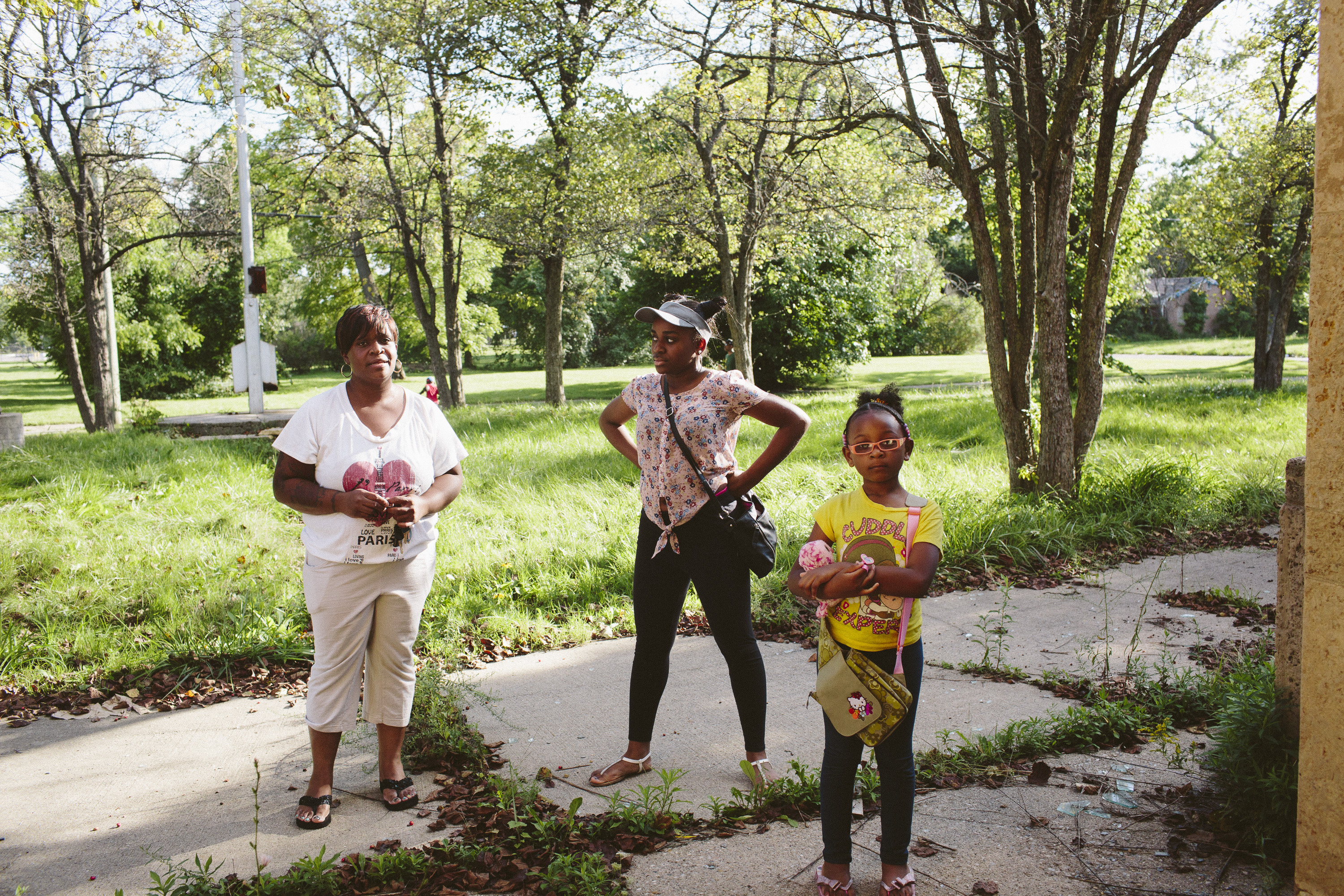 Moore remembers leaving the meeting in a daze. How had the options gotten this bad? She knew Detroit’s schools weren’t great — the district had one of the lowest graduation rates in the country — but sending her girls to one of the city’s dozens of charter schools or heading out to the suburbs, as some parents did, had never crossed her mind. She didn’t have a car or a job. And she didn’t have the money to hop around Metro Detroit searching for a kindergarten for Tyliya. She needed a good, dependable school in her neighborhood. Oakman had felt like a second home, and now this man in a suit was standing in front of her saying she’d have to find a new one.“I’m raising my children in a school system that I loved, and still do, but I’ve seen it just stripped,” Moore, a head-strong but even-tempered 36-year-old with a choppy bob and sleeve of tattoos, explained to me this fall. “The state supposedly came in to help the situation, but it just seems like they came in to strip it down to what it is now.”The gutting of Detroit’s public schools is the result of an experiment started 23 years ago, when education reformers including Betsy DeVos, now Donald Trump’s pick to lead the Education Department, got Michigan to bet big on charters and school choice. The Obama administration has promoted competition, but DeVos looks set to take free-market education policy to new heights. She has made clear her goal is to use charters to eventually get public dollars to private and religious schools, but the consequences of her school choice policy in Detroit leave gaping questions about how she will also care for America’s public schools.
Moore remembers leaving the meeting in a daze. How had the options gotten this bad? She knew Detroit’s schools weren’t great — the district had one of the lowest graduation rates in the country — but sending her girls to one of the city’s dozens of charter schools or heading out to the suburbs, as some parents did, had never crossed her mind. She didn’t have a car or a job. And she didn’t have the money to hop around Metro Detroit searching for a kindergarten for Tyliya. She needed a good, dependable school in her neighborhood. Oakman had felt like a second home, and now this man in a suit was standing in front of her saying she’d have to find a new one.“I’m raising my children in a school system that I loved, and still do, but I’ve seen it just stripped,” Moore, a head-strong but even-tempered 36-year-old with a choppy bob and sleeve of tattoos, explained to me this fall. “The state supposedly came in to help the situation, but it just seems like they came in to strip it down to what it is now.”The gutting of Detroit’s public schools is the result of an experiment started 23 years ago, when education reformers including Betsy DeVos, now Donald Trump’s pick to lead the Education Department, got Michigan to bet big on charters and school choice. The Obama administration has promoted competition, but DeVos looks set to take free-market education policy to new heights. She has made clear her goal is to use charters to eventually get public dollars to private and religious schools, but the consequences of her school choice policy in Detroit leave gaping questions about how she will also care for America’s public schools.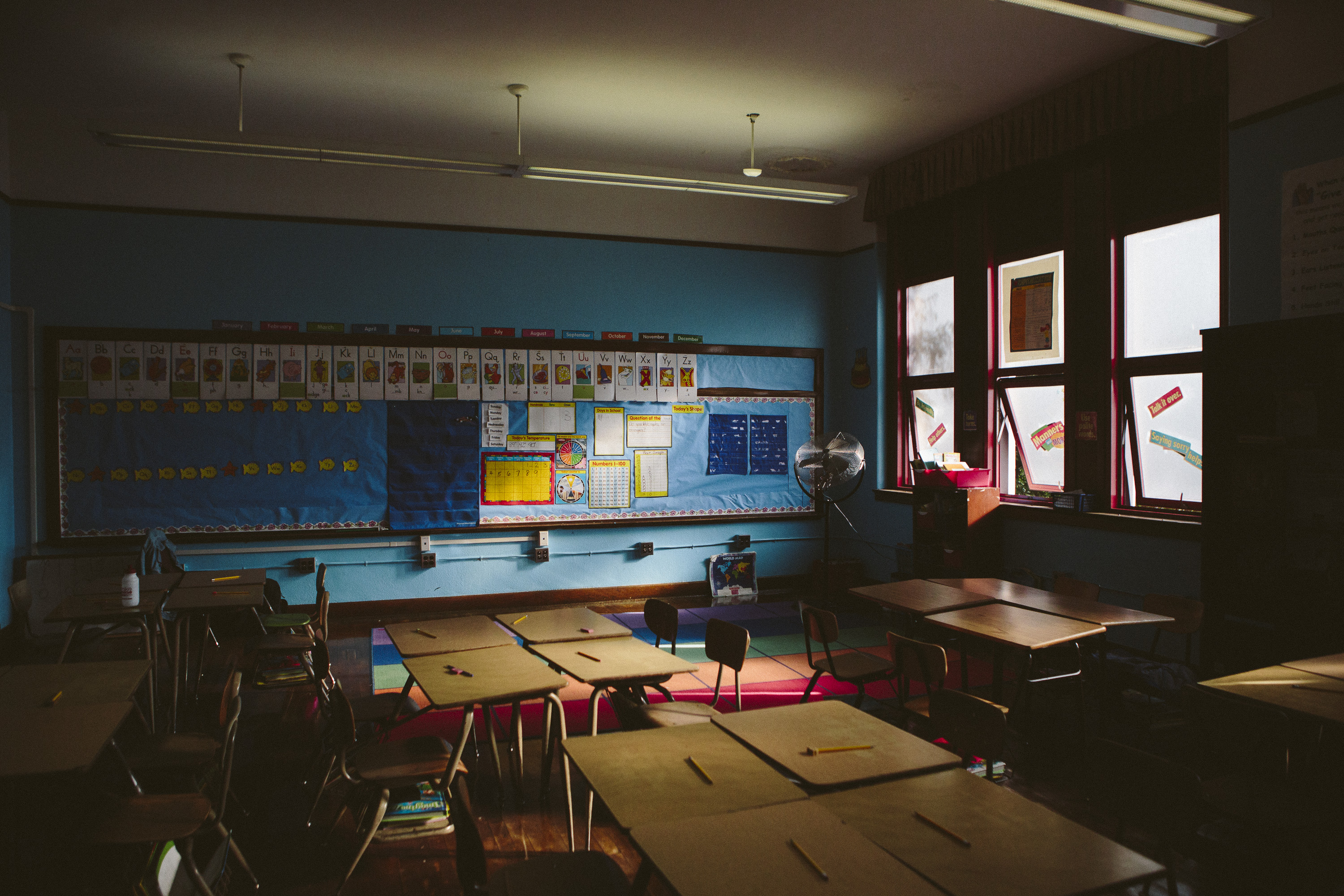 In Detroit, choice has come largely at the expense of the traditional public school district and schools like Oakman. As students joined new charters, public school enrollment and funding fell. Unregulated competition pushed these schools into near-unrecoverable insolvency and allowed dubious for-profit charter operators to prosper without establishing a track record of better outcomes for students. A 2014 analysis showed 17 percent of Detroit charter school students were rated proficient in math, versus 13 percent of traditional public school students. Last year less than 1 percent of the city’s schools got an A or B+ rating from Excellent Schools Detroit, a local reform group that provides school information to families. Nearly 70 percent earned a D+ or lower, and 40 percent of those bottom-performers were charters. Earlier this year, seven Detroit students sued the state of Michigan for failing to provide basic access to literacy — two of the kids were enrolled in local charter schools.“Even for proponents of choice like Excellent Schools Detroit, according to their own measurements, choice is not on its own promoting improvements,” said Thomas Pedroni, an associate professor at Wayne State University’s School of Education. The premise of school choice is that competition raises all sectors, but in Detroit, and many other cities around the country, that just hasn’t happened. “What competition ends up producing is not a choice of failing versus good schools but a bunch of similarly mediocre schools.”
In Detroit, choice has come largely at the expense of the traditional public school district and schools like Oakman. As students joined new charters, public school enrollment and funding fell. Unregulated competition pushed these schools into near-unrecoverable insolvency and allowed dubious for-profit charter operators to prosper without establishing a track record of better outcomes for students. A 2014 analysis showed 17 percent of Detroit charter school students were rated proficient in math, versus 13 percent of traditional public school students. Last year less than 1 percent of the city’s schools got an A or B+ rating from Excellent Schools Detroit, a local reform group that provides school information to families. Nearly 70 percent earned a D+ or lower, and 40 percent of those bottom-performers were charters. Earlier this year, seven Detroit students sued the state of Michigan for failing to provide basic access to literacy — two of the kids were enrolled in local charter schools.“Even for proponents of choice like Excellent Schools Detroit, according to their own measurements, choice is not on its own promoting improvements,” said Thomas Pedroni, an associate professor at Wayne State University’s School of Education. The premise of school choice is that competition raises all sectors, but in Detroit, and many other cities around the country, that just hasn’t happened. “What competition ends up producing is not a choice of failing versus good schools but a bunch of similarly mediocre schools.” As a kid growing up in the same northwest Detroit neighborhood, Moore attended only three schools — an elementary, middle, and high school. She remembers her parents emphasizing stability, and she hoped for the same for her children. After graduating from Cass Tech, one of the city’s premier high schools, in 1998, Moore decided to pursue a career as a beautician and did hair for a few years around the neighborhood. When business dried up, she took a job as a janitor at Comerica Tower, a shiny postmodern skyscraper in the city’s center.In 2007, as Chrysler and the rest of the Big Three auto companies began to buckle under financial pressure and the subprime mortgage crisis hit, she got laid off. With the sudden extra time, she began searching for a school that would work for Chrishawana, who was then months away from starting kindergarten. For hours each day, Moore would wander around the neighborhood, zig-zagging past harshly lit gas stations, party stores, and vacant lots where entire city blocks had started to rewild and knot.The closest and most obvious option for Chrishawana was George Parker Elementary-Middle School, housed in a collegiate-gothic building a comfortable 10-minute hike from Moore’s apartment. On location alone, it seemed promising. When Moore ventured inside, however, it was a different story. Guarded by a row of metal detectors, the school felt more like a detention center than a place of learning. “I stood there for a while before anyone said hello and it just kind of had a depressing feeling,” Moore remembered. She knew immediately she had to keep looking.
As a kid growing up in the same northwest Detroit neighborhood, Moore attended only three schools — an elementary, middle, and high school. She remembers her parents emphasizing stability, and she hoped for the same for her children. After graduating from Cass Tech, one of the city’s premier high schools, in 1998, Moore decided to pursue a career as a beautician and did hair for a few years around the neighborhood. When business dried up, she took a job as a janitor at Comerica Tower, a shiny postmodern skyscraper in the city’s center.In 2007, as Chrysler and the rest of the Big Three auto companies began to buckle under financial pressure and the subprime mortgage crisis hit, she got laid off. With the sudden extra time, she began searching for a school that would work for Chrishawana, who was then months away from starting kindergarten. For hours each day, Moore would wander around the neighborhood, zig-zagging past harshly lit gas stations, party stores, and vacant lots where entire city blocks had started to rewild and knot.The closest and most obvious option for Chrishawana was George Parker Elementary-Middle School, housed in a collegiate-gothic building a comfortable 10-minute hike from Moore’s apartment. On location alone, it seemed promising. When Moore ventured inside, however, it was a different story. Guarded by a row of metal detectors, the school felt more like a detention center than a place of learning. “I stood there for a while before anyone said hello and it just kind of had a depressing feeling,” Moore remembered. She knew immediately she had to keep looking.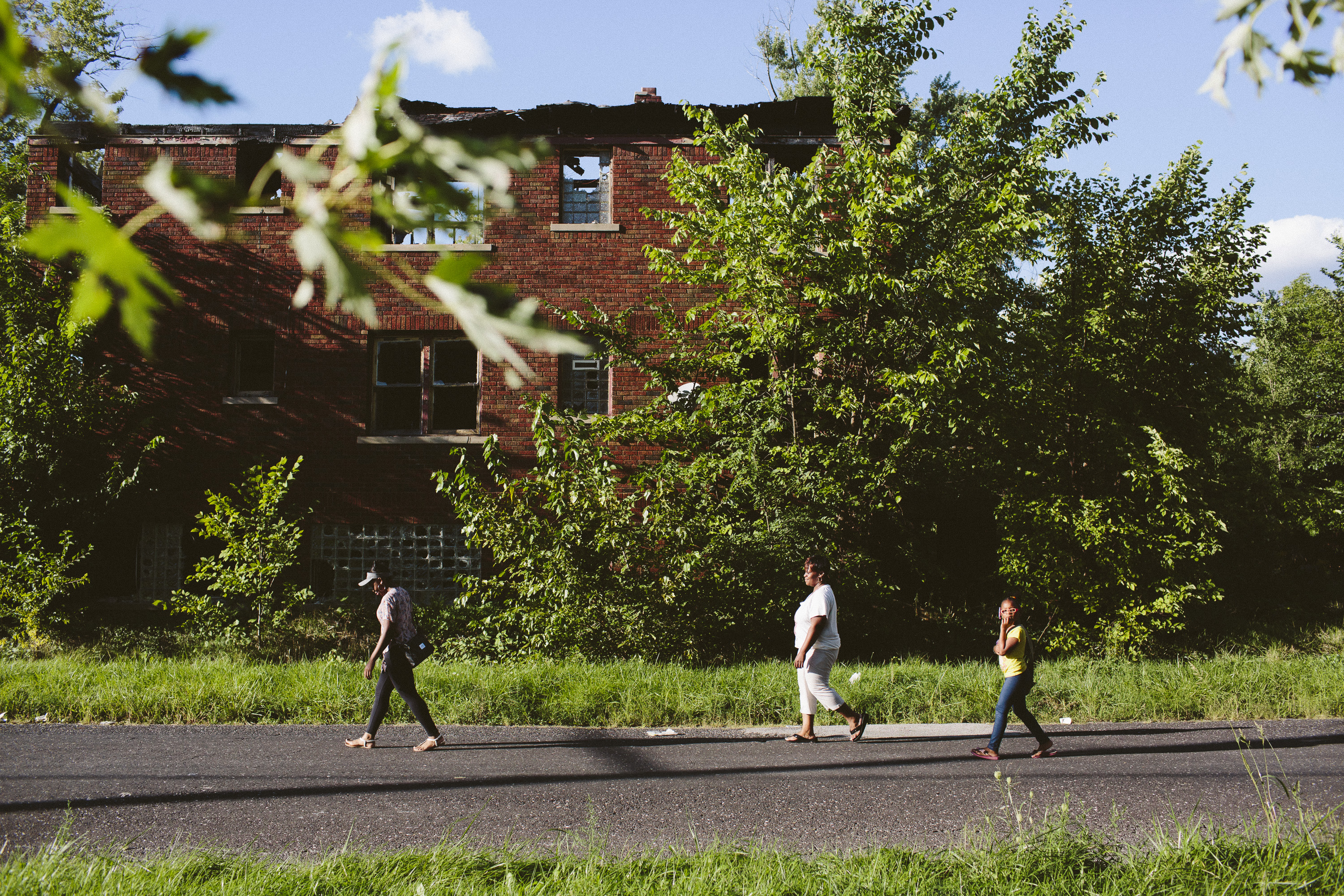 Choices for parents in Detroit were multiplying: Five charter schools opened that year, adding to the 82 that had opened in the city over the preceding decade.When charter schools first entered the national discourse, in the late 1980s, the conversations focused on goals of collaboration and partnership. Charter pioneers such as Albert Shanker, the late president of the American Federation of Teachers, supported these schools on the premise that they would have the flexibility to experiment with new teaching techniques that could ultimately be integrated back into the traditional public school setting.But by 1993, when Michigan lawmakers began to debate charter legislation and school reform, Shanker had renounced charters, calling them an anti-union “gimmick” — new supporters had capitalized on the charter promise of flexibility and begun arguing that teachers unions, with their clunky bureaucracy, would hinder innovation. This new face of charter school support was obvious in Michigan, where the movement’s biggest champions weren’t parents or educators but members of the business community and a cadre of billionaires with ties to the religious right. Among them were the DeVos family, heirs to the fortune amassed from marketing behemoth Amway, who since the 1970s have donated at least $200 million to conservative and Christian causes across the nation with a keen focus on education.Engler signed a measure in January 1994 allowing charters to operate. The first charter schools opened in Detroit in the following year. In the beginning, they fit the original charter school mission: largely mom-and-pop operations that filled an unmet need in the city. Three-quarters of Detroiters were black, and two of those first charter schools were grounded in an Afrocentric curriculum.As charters attracted families with promises of smaller class sizes, increased technology, and minimized bureaucracy, Detroit’s traditional public schools lost students and hemorrhaged funds. Because the short-term costs of losing a student were far greater than the average cost of educating one, this set the public school district on a path toward insolvency. Last year, for example, there were more than 100,000 school-age students living in the city; fewer than 47,000 of them attended the public schools. Take the estimated per-pupil funding figure of $7,500 per kid, and that’s nearly $400 million in revenue missing from the district.Fixed overhead costs, such as heating a school building or paying teachers, didn’t suddenly drop because a child left the district. The result was a negative feedback loop. As students left, the district lost funds and had to make cuts. Maybe it nixed art, or got rid of a social worker. Maybe it crammed more kids into a classroom, or made the risky decision to get rid of on-site boiler operators. Maybe, if things were really tight, it shut down schools. These quick fixes in turn made the district less “competitive,” and so the kids who could leave eventually did. The district lost even more funding and sunk further into entropy. “It is akin to an arsonist adding an accelerant to a fire,” Peter Hammer, the director of the Damon Keith Center for Civil Rights at Wayne State’s law school, wrote in a 2012 paper on the effects of competition in DPS.
Choices for parents in Detroit were multiplying: Five charter schools opened that year, adding to the 82 that had opened in the city over the preceding decade.When charter schools first entered the national discourse, in the late 1980s, the conversations focused on goals of collaboration and partnership. Charter pioneers such as Albert Shanker, the late president of the American Federation of Teachers, supported these schools on the premise that they would have the flexibility to experiment with new teaching techniques that could ultimately be integrated back into the traditional public school setting.But by 1993, when Michigan lawmakers began to debate charter legislation and school reform, Shanker had renounced charters, calling them an anti-union “gimmick” — new supporters had capitalized on the charter promise of flexibility and begun arguing that teachers unions, with their clunky bureaucracy, would hinder innovation. This new face of charter school support was obvious in Michigan, where the movement’s biggest champions weren’t parents or educators but members of the business community and a cadre of billionaires with ties to the religious right. Among them were the DeVos family, heirs to the fortune amassed from marketing behemoth Amway, who since the 1970s have donated at least $200 million to conservative and Christian causes across the nation with a keen focus on education.Engler signed a measure in January 1994 allowing charters to operate. The first charter schools opened in Detroit in the following year. In the beginning, they fit the original charter school mission: largely mom-and-pop operations that filled an unmet need in the city. Three-quarters of Detroiters were black, and two of those first charter schools were grounded in an Afrocentric curriculum.As charters attracted families with promises of smaller class sizes, increased technology, and minimized bureaucracy, Detroit’s traditional public schools lost students and hemorrhaged funds. Because the short-term costs of losing a student were far greater than the average cost of educating one, this set the public school district on a path toward insolvency. Last year, for example, there were more than 100,000 school-age students living in the city; fewer than 47,000 of them attended the public schools. Take the estimated per-pupil funding figure of $7,500 per kid, and that’s nearly $400 million in revenue missing from the district.Fixed overhead costs, such as heating a school building or paying teachers, didn’t suddenly drop because a child left the district. The result was a negative feedback loop. As students left, the district lost funds and had to make cuts. Maybe it nixed art, or got rid of a social worker. Maybe it crammed more kids into a classroom, or made the risky decision to get rid of on-site boiler operators. Maybe, if things were really tight, it shut down schools. These quick fixes in turn made the district less “competitive,” and so the kids who could leave eventually did. The district lost even more funding and sunk further into entropy. “It is akin to an arsonist adding an accelerant to a fire,” Peter Hammer, the director of the Damon Keith Center for Civil Rights at Wayne State’s law school, wrote in a 2012 paper on the effects of competition in DPS.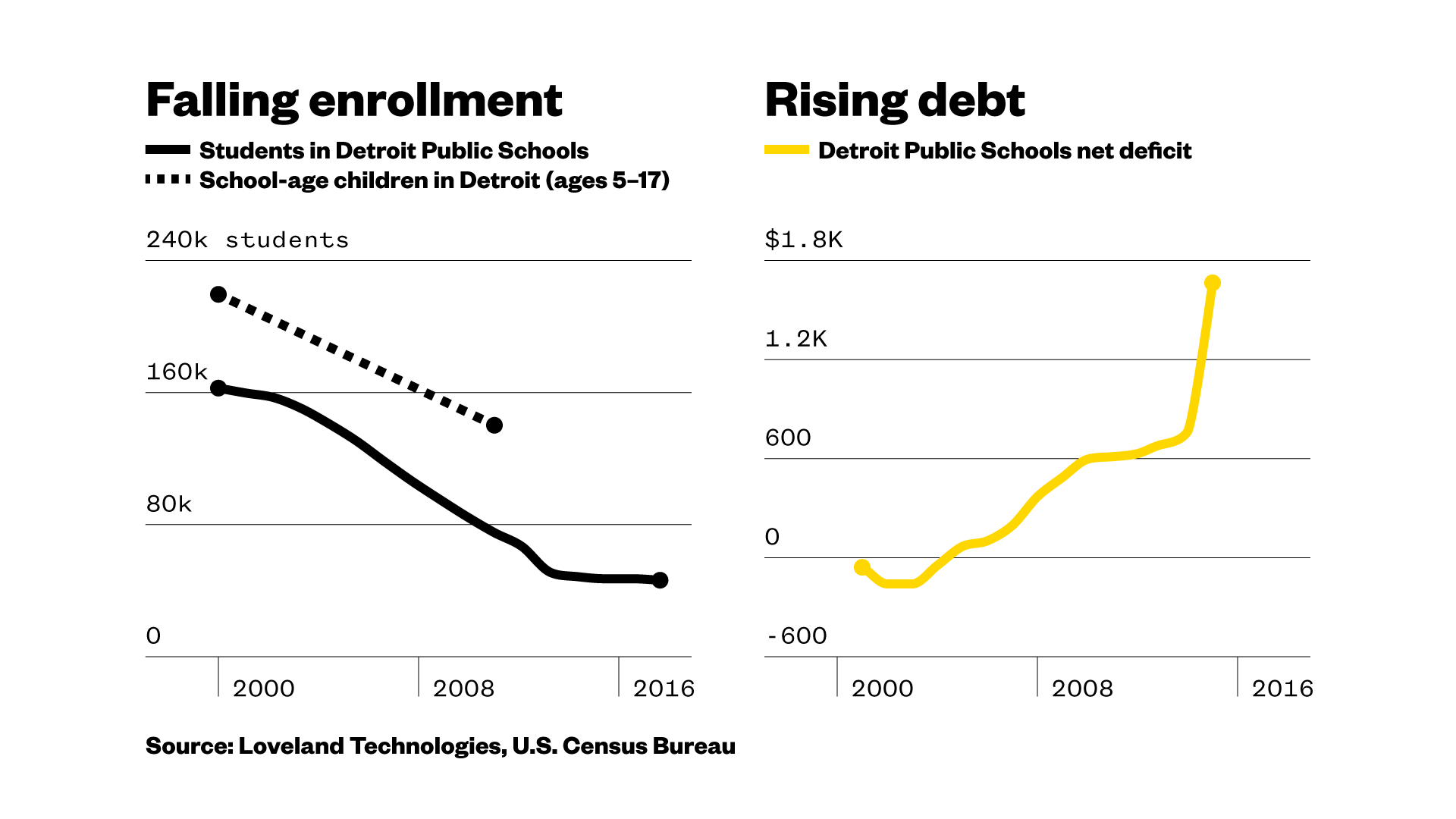 By July 2008, the district’s general fund balance was in the red nearly $140 million. That December, the state superintendent declared DPS a financial emergency and the governor appointed Robert Bobb, a professional city manager, to take over the district’s finances. Over the next seven years, four more managers would try to right the ship, cutting health coverage for staff, slicing the central office, privatizing services, and closing more than half the city’s schools, all as the deficit grew.“In some regards I feel sorry for the emergency managers because they are no more able to deal with these problems than a democratically elected school board can,” Hammer told me earlier this year. “They will just end up with more debt and more debt, and they did, because it’s not a management issue; it’s a finance issue.”
By July 2008, the district’s general fund balance was in the red nearly $140 million. That December, the state superintendent declared DPS a financial emergency and the governor appointed Robert Bobb, a professional city manager, to take over the district’s finances. Over the next seven years, four more managers would try to right the ship, cutting health coverage for staff, slicing the central office, privatizing services, and closing more than half the city’s schools, all as the deficit grew.“In some regards I feel sorry for the emergency managers because they are no more able to deal with these problems than a democratically elected school board can,” Hammer told me earlier this year. “They will just end up with more debt and more debt, and they did, because it’s not a management issue; it’s a finance issue.” State takeovers of school districts are a relatively new phenomenon, popularized in the mid-1990s, around the same time charter schools gained traction. Proponents argue that a business-minded outsider can come in and quickly hack through red tape to reduce wasteful spending and mismanagement. Detroit’s schools had already fallen into receivership once, in 1999, amid low enrollment and poor graduation rates, but the following six years of state control failed to manage away these problems. In Michigan, a 2011 law gave emergency managers expanded powers to end contracts (for example, those bargained by teachers’ unions), sell public assets (including school buildings and property), and decide how much authority elected officials should have over schools.Bobb arrived in Detroit and got down to business searching for a culprit behind the schools’ wildly unbalanced books.“I stripped everything that I could out of that school system; every penny got squeezed out,” Bobb told me this fall, his voice steady and with a hint of pride. But it quickly became clear that Detroit’s schools wouldn’t survive through cuts alone. The district desperately needed to retain students to keep its funding, but the cuts created conditions that drove them away.“Emergency management creates even more of a sense of the school district floundering,” Sarah Reckhow, an assistant professor at Michigan State University who studies school district finances, explained. Simply announcing a takeover could make families wary and quick to opt out. “They have to make cuts, close schools, they have to make decisions that are not necessarily putting educational quality first. And so, yeah, they are raising a red flag, but they also contribute to the downward spiral.”
State takeovers of school districts are a relatively new phenomenon, popularized in the mid-1990s, around the same time charter schools gained traction. Proponents argue that a business-minded outsider can come in and quickly hack through red tape to reduce wasteful spending and mismanagement. Detroit’s schools had already fallen into receivership once, in 1999, amid low enrollment and poor graduation rates, but the following six years of state control failed to manage away these problems. In Michigan, a 2011 law gave emergency managers expanded powers to end contracts (for example, those bargained by teachers’ unions), sell public assets (including school buildings and property), and decide how much authority elected officials should have over schools.Bobb arrived in Detroit and got down to business searching for a culprit behind the schools’ wildly unbalanced books.“I stripped everything that I could out of that school system; every penny got squeezed out,” Bobb told me this fall, his voice steady and with a hint of pride. But it quickly became clear that Detroit’s schools wouldn’t survive through cuts alone. The district desperately needed to retain students to keep its funding, but the cuts created conditions that drove them away.“Emergency management creates even more of a sense of the school district floundering,” Sarah Reckhow, an assistant professor at Michigan State University who studies school district finances, explained. Simply announcing a takeover could make families wary and quick to opt out. “They have to make cuts, close schools, they have to make decisions that are not necessarily putting educational quality first. And so, yeah, they are raising a red flag, but they also contribute to the downward spiral.”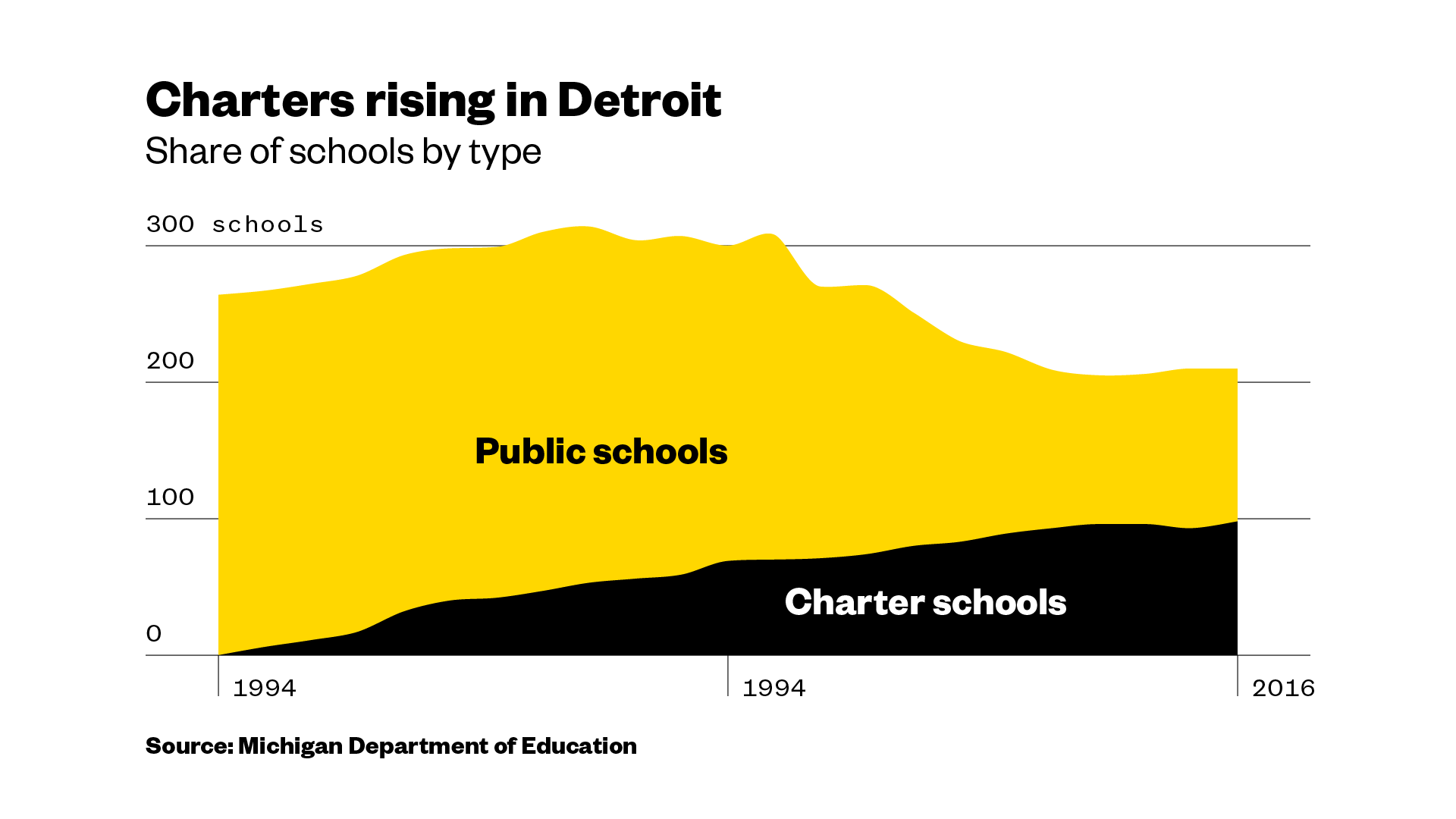 Bobb was in regular communication with local reform leaders as they attempted to map out a vision for DPS under the banner Excellent Schools Detroit. Their goals included placing the district in the hands of a mayor-appointed board after Bobb’s eventual departure, bringing in more charters, and hiring new “highly-qualified” teachers through Teach for America. (I first arrived in Detroit as a member of TFA’s 2010 teaching corps.) These tactics were equally popular among Democrats, including Education Secretary Arne Duncan and President Obama, and DeVos and other education reformers on the right.“We need to care far more about parents being good shoppers than ‘good’ voters,” Lou Glazer, one of the many pro-school choice voices in the group, wrote in an email that was eventually forwarded to Bobb. He added in a separate email, “We need to accept that over the long term, we don’t have to fix DPS to meet the goal of Detroit’s students attending a quality school.”
Bobb was in regular communication with local reform leaders as they attempted to map out a vision for DPS under the banner Excellent Schools Detroit. Their goals included placing the district in the hands of a mayor-appointed board after Bobb’s eventual departure, bringing in more charters, and hiring new “highly-qualified” teachers through Teach for America. (I first arrived in Detroit as a member of TFA’s 2010 teaching corps.) These tactics were equally popular among Democrats, including Education Secretary Arne Duncan and President Obama, and DeVos and other education reformers on the right.“We need to care far more about parents being good shoppers than ‘good’ voters,” Lou Glazer, one of the many pro-school choice voices in the group, wrote in an email that was eventually forwarded to Bobb. He added in a separate email, “We need to accept that over the long term, we don’t have to fix DPS to meet the goal of Detroit’s students attending a quality school.”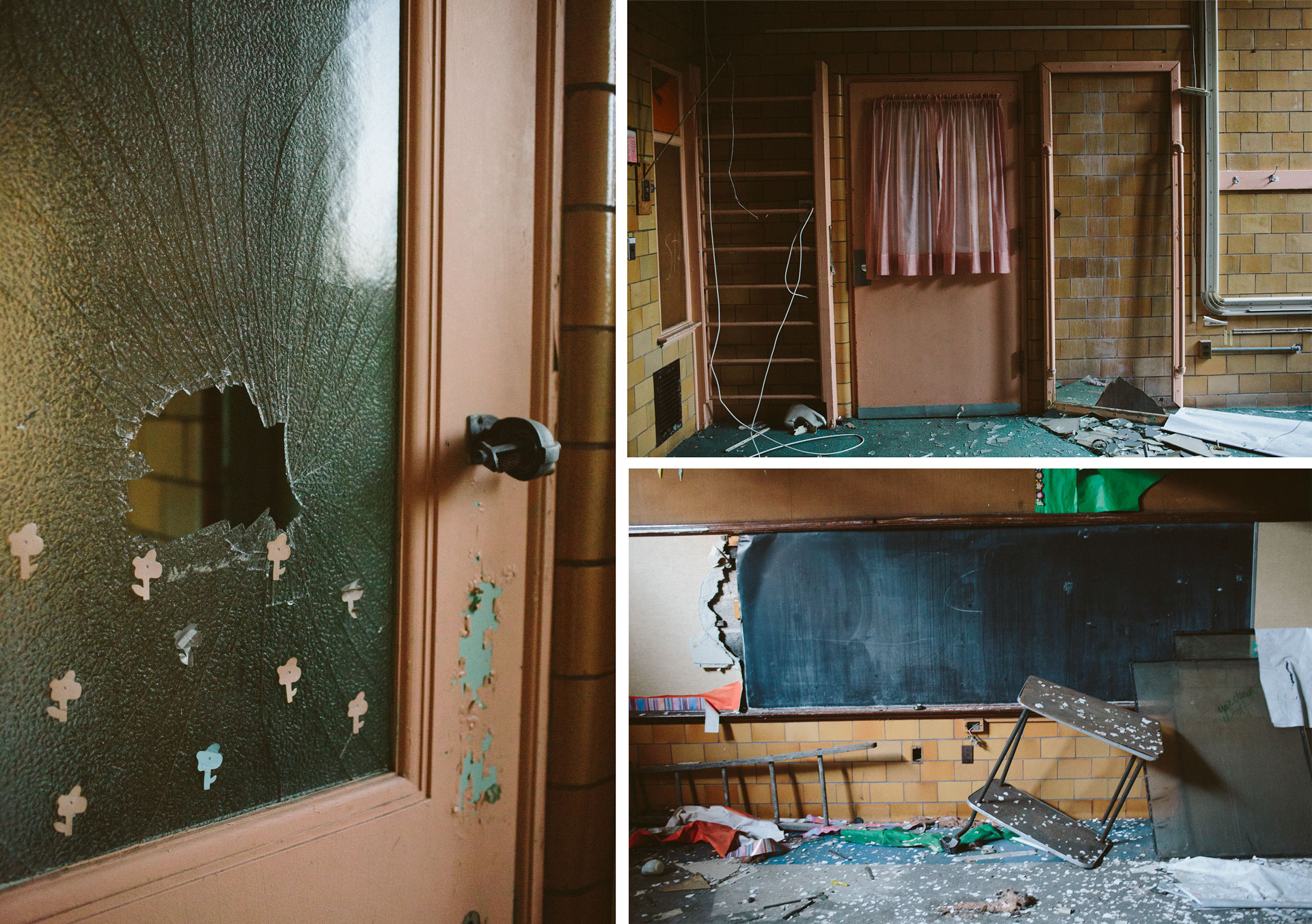 By the end of 2010-11 school year, Bobb’s last year at the helm, Detroit’s education landscape had shifted dramatically. Bobb had closed 70 DPS schools and the number of charters was set to grow by 20 percent. The public schools’ deficit was $283 million.“It wasn’t just competition that did this, but the state government putting its hands on the scale and favoring charters by diminishing DPS,” Pedroni, the Wayne State education professor, said.Because they could do little to change the state funding model or stem the siphoning of children to the ever-growing charter school network, the choice for the emergency managers was still centered on cuts and closures. And so Roy Roberts, Bobb’s successor, appeared at Oakman Elementary in April 2013 with the school on his list.
By the end of 2010-11 school year, Bobb’s last year at the helm, Detroit’s education landscape had shifted dramatically. Bobb had closed 70 DPS schools and the number of charters was set to grow by 20 percent. The public schools’ deficit was $283 million.“It wasn’t just competition that did this, but the state government putting its hands on the scale and favoring charters by diminishing DPS,” Pedroni, the Wayne State education professor, said.Because they could do little to change the state funding model or stem the siphoning of children to the ever-growing charter school network, the choice for the emergency managers was still centered on cuts and closures. And so Roy Roberts, Bobb’s successor, appeared at Oakman Elementary in April 2013 with the school on his list. Moore wouldn’t consider herself a good “shopper” — she laughs at the corporate speak, like “shopper” and “stakeholder,” that have become education buzzwords. But she really is. When she was laid off, she had the time to find a school that was the right choice for her and her daughter, a luxury many Detroit parents don’t have. And where the emergency managers and technocratic reformers looked at test scores and balance sheets, Moore’s experience with Oakman showed her a school could be much more than its annual report.Built in the late 1920s with no expense spared, Oakman was ahead of its time in almost every respect, prioritizing accessibility and acceptance with spacious hallways and unobtrusive changing rooms. The giant, single-story building was encased by delicate, wrought iron fencing and topped with a shimmery slate roof that looked like mermaid scales. In 1978 it was opened up to all kids, and by the time Moore came across it, in 2007, nearly half the students were general education.A big part of Oakman’s “rightness,” for Moore, had to do with the people. The recession hit Detroit hard and the school became a place of community support, where parents could feel comfortable asking for help if their lights or water were cut off, or their food stamps were low and they didn’t have enough to eat. “We had our own parent room, we had people who would come in and have problems, come in and cry, get a cup of coffee, tea, talk about it, get online, do job searches, print out resumes — it was like a one-stop shop,” Moore said. When she and the other parents weren’t planning turkey drives, or naming a student of the month, they were helping out in the lunch line, with recess, or in the classrooms. They were fixtures of the school day.
Moore wouldn’t consider herself a good “shopper” — she laughs at the corporate speak, like “shopper” and “stakeholder,” that have become education buzzwords. But she really is. When she was laid off, she had the time to find a school that was the right choice for her and her daughter, a luxury many Detroit parents don’t have. And where the emergency managers and technocratic reformers looked at test scores and balance sheets, Moore’s experience with Oakman showed her a school could be much more than its annual report.Built in the late 1920s with no expense spared, Oakman was ahead of its time in almost every respect, prioritizing accessibility and acceptance with spacious hallways and unobtrusive changing rooms. The giant, single-story building was encased by delicate, wrought iron fencing and topped with a shimmery slate roof that looked like mermaid scales. In 1978 it was opened up to all kids, and by the time Moore came across it, in 2007, nearly half the students were general education.A big part of Oakman’s “rightness,” for Moore, had to do with the people. The recession hit Detroit hard and the school became a place of community support, where parents could feel comfortable asking for help if their lights or water were cut off, or their food stamps were low and they didn’t have enough to eat. “We had our own parent room, we had people who would come in and have problems, come in and cry, get a cup of coffee, tea, talk about it, get online, do job searches, print out resumes — it was like a one-stop shop,” Moore said. When she and the other parents weren’t planning turkey drives, or naming a student of the month, they were helping out in the lunch line, with recess, or in the classrooms. They were fixtures of the school day.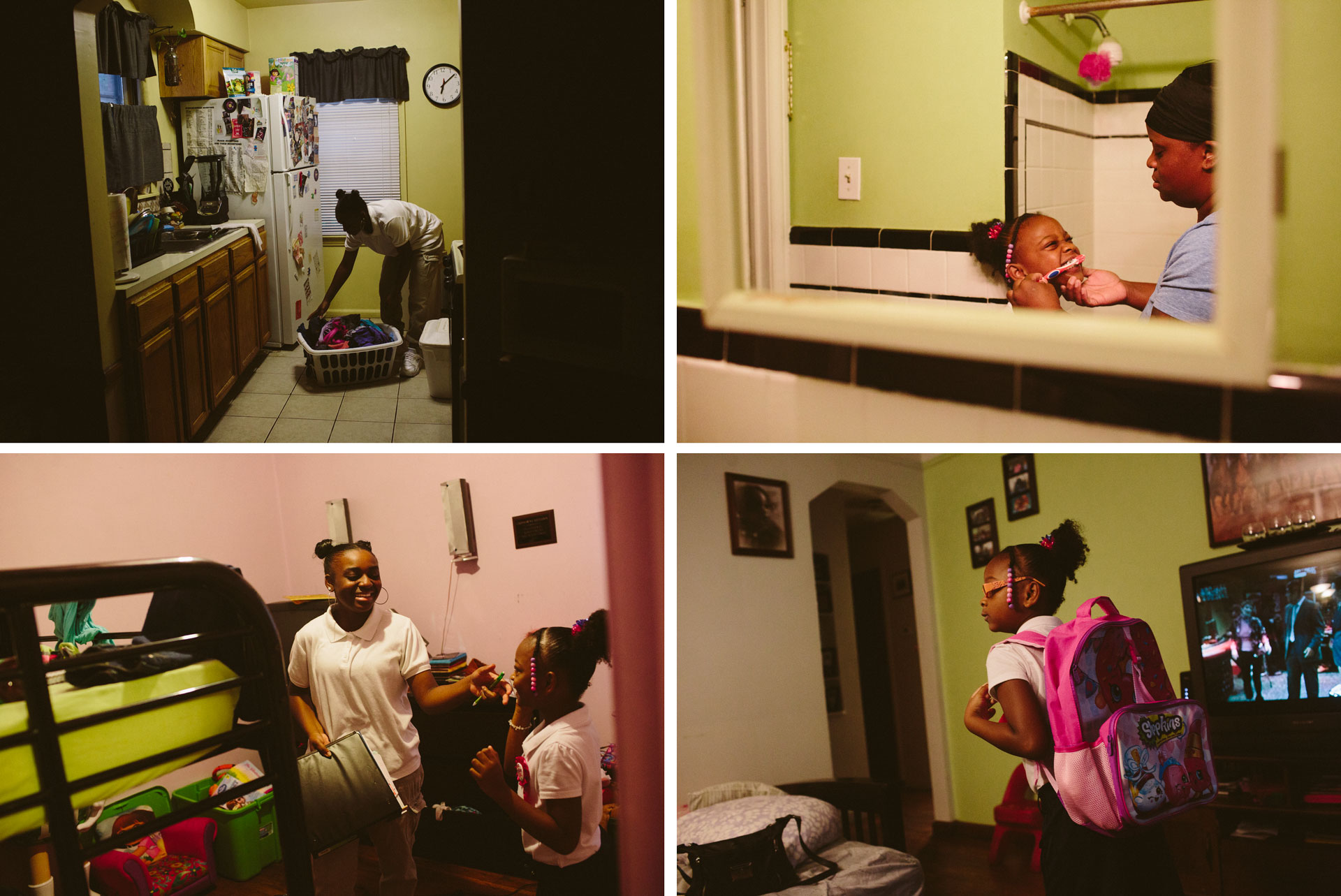 “You can’t do nothing — your mother is there all the time,” Chrishawana, now a poised ninth grader with an affinity for Tupac and the same calm cadence as her mom, said with a laugh, thinking back on what it was like to have Moore so present at the school. This meant she had to always be on her best behavior, but it was an OK trade-off in the end. “The positive side is you can see your parents getting involved with different children and having fun.”Moore had little trouble organizing the other parents to try to save Oakman. After she got over the initial shock of Roberts’ visit, the following morning she printed up a bunch of flyers. She had heard the school board was meeting that afternoon. Perhaps if they appealed to the board — showed them the positives of their rich community school — they would retract the closure.Moore marched into the meeting, a crew of about 25 parents and kids behind her. The board looked baffled. They were not used to having families attend their meetings; over the last four years, they had become increasingly marginalized and no longer had any say over the district. They listened and empathized, then explained that they had no power. That all lay with the emergency manager and the state.
“You can’t do nothing — your mother is there all the time,” Chrishawana, now a poised ninth grader with an affinity for Tupac and the same calm cadence as her mom, said with a laugh, thinking back on what it was like to have Moore so present at the school. This meant she had to always be on her best behavior, but it was an OK trade-off in the end. “The positive side is you can see your parents getting involved with different children and having fun.”Moore had little trouble organizing the other parents to try to save Oakman. After she got over the initial shock of Roberts’ visit, the following morning she printed up a bunch of flyers. She had heard the school board was meeting that afternoon. Perhaps if they appealed to the board — showed them the positives of their rich community school — they would retract the closure.Moore marched into the meeting, a crew of about 25 parents and kids behind her. The board looked baffled. They were not used to having families attend their meetings; over the last four years, they had become increasingly marginalized and no longer had any say over the district. They listened and empathized, then explained that they had no power. That all lay with the emergency manager and the state.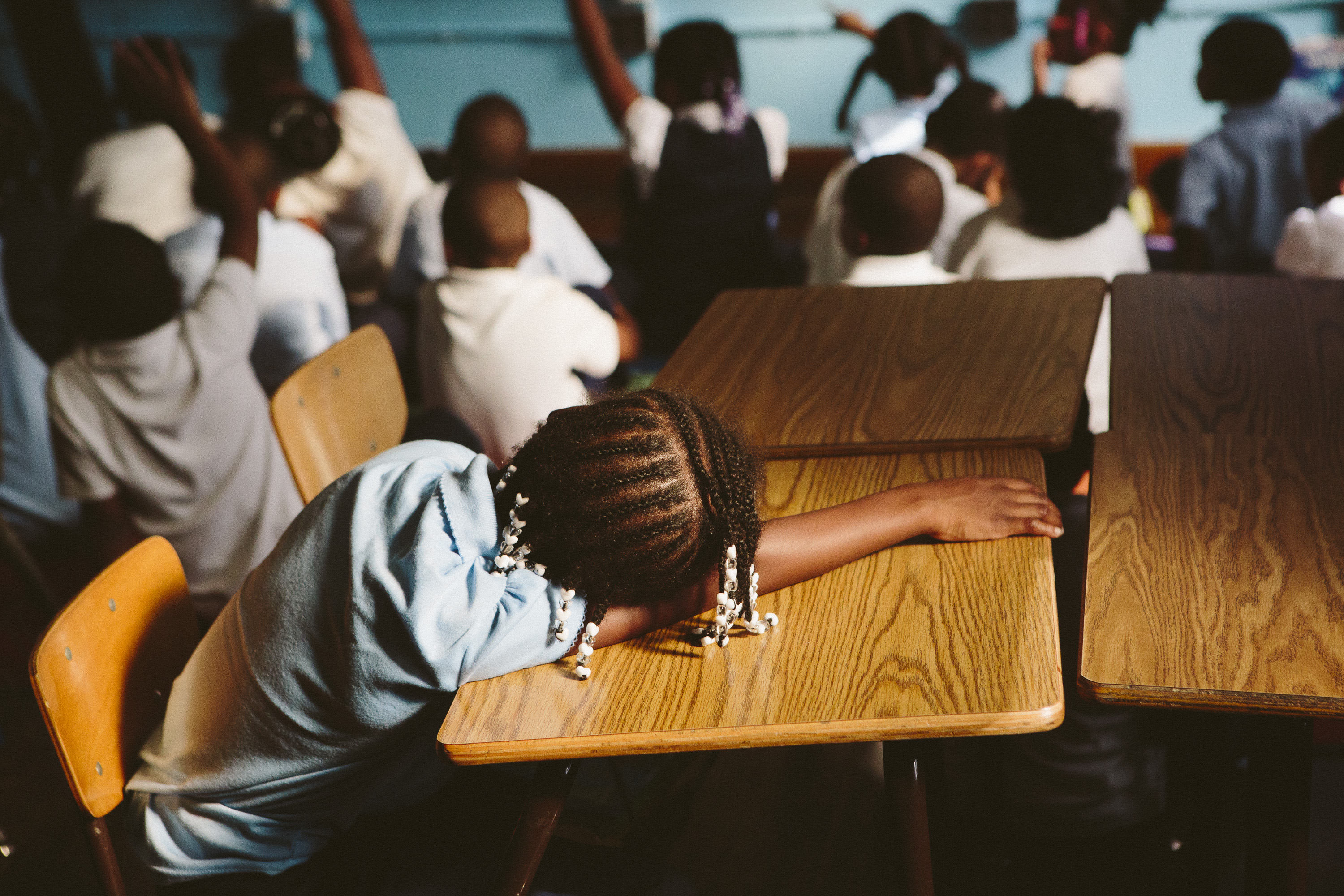 Moore would have considered going back to try talking to Roberts, but a month later he stepped down. “As far as I am concerned, this district is fixed,” Roberts said at his resignation announcement. When the school year ended in June, the general fund deficit was $94 million, and the net asset deficit was at $687 million. It was the first year charter schools had enrolled more students than DPS. There were now 94 DPS schools and 98 charter schools in the city.
Moore would have considered going back to try talking to Roberts, but a month later he stepped down. “As far as I am concerned, this district is fixed,” Roberts said at his resignation announcement. When the school year ended in June, the general fund deficit was $94 million, and the net asset deficit was at $687 million. It was the first year charter schools had enrolled more students than DPS. There were now 94 DPS schools and 98 charter schools in the city. Michigan has one of the most lax charter school laws in the nation and is often called the “wild West” of school choice. Nearly 80 percent of the state’s charter schools are run by for-profit companies — the highest rate in the nation. Anyone can start a school, and charter authorizers include a wide range of public bodies such as traditional school districts, public universities, and community colleges.Charter advocates point to the poor performance of public schools to explain the need for alternatives. But Michigan students’ achievement has not improved in step with increased school competition, and now both public schools and charters are falling behind. The state is currently ranked 41st in the nation in fourth-grade reading, when it was 28th in 2003.Lack of regulation has meant charter operators with bad track records or no record at all have cropped up in Detroit and across the state. A 2014 Detroit Free Press investigation into mismanagement in the charter school sector found the state had spent nearly $1 billion on charter schools yet public accountability had plummeted and schools were floundering. A 2013 Stanford University study found that more than half of Detroit’s charter schools failed to perform “significantly better” in math and reading and in some cases performed worse than Detroit public schools. Overall, the report found that 84 percent of charter students in Michigan performed below the state average in math and 80 percent were below the state average in reading.GLEP points to the Stanford study’s finding that charter students in Michigan learned at faster rates than their public school counterparts. They also say that a majority of Detroit kids attending charters is evidence that the sector is “flourishing.” Whether or not these schools are performing well is less important than the fact that families are choosing them.“Our hope for the future of Detroit and everywhere else in the state is that every child has access to, and the option to, pick the school that works for them, whether it is traditional, or charter, or private,” GLEP’s Naeyert told me. He said what drives parents to choose certain schools may not be academics, and it’s not his organization’s place to butt in when it’s not. “Generally, we don’t believe we can tell parents they can’t choose this school down the street because it’s safer, if that’s what they’re motivated by.”But choice doesn’t take place in a vacuum, and it vanishes when the school down the street is abruptly closed. “It’s backwards,” Moore told me last month as we sat in her tidy, plant-filled living room. Chrishawana, now 14, and Tylyia, 7, were eating a spaghetti dinner before getting ready for bed. “You’re trying to build this image of ‘OK, you’re free to go wherever you want,’ but if I have two crappy schools close to me and you close the school that out of the three was the best one, how are you helping me? What’s the choice in that?”
Michigan has one of the most lax charter school laws in the nation and is often called the “wild West” of school choice. Nearly 80 percent of the state’s charter schools are run by for-profit companies — the highest rate in the nation. Anyone can start a school, and charter authorizers include a wide range of public bodies such as traditional school districts, public universities, and community colleges.Charter advocates point to the poor performance of public schools to explain the need for alternatives. But Michigan students’ achievement has not improved in step with increased school competition, and now both public schools and charters are falling behind. The state is currently ranked 41st in the nation in fourth-grade reading, when it was 28th in 2003.Lack of regulation has meant charter operators with bad track records or no record at all have cropped up in Detroit and across the state. A 2014 Detroit Free Press investigation into mismanagement in the charter school sector found the state had spent nearly $1 billion on charter schools yet public accountability had plummeted and schools were floundering. A 2013 Stanford University study found that more than half of Detroit’s charter schools failed to perform “significantly better” in math and reading and in some cases performed worse than Detroit public schools. Overall, the report found that 84 percent of charter students in Michigan performed below the state average in math and 80 percent were below the state average in reading.GLEP points to the Stanford study’s finding that charter students in Michigan learned at faster rates than their public school counterparts. They also say that a majority of Detroit kids attending charters is evidence that the sector is “flourishing.” Whether or not these schools are performing well is less important than the fact that families are choosing them.“Our hope for the future of Detroit and everywhere else in the state is that every child has access to, and the option to, pick the school that works for them, whether it is traditional, or charter, or private,” GLEP’s Naeyert told me. He said what drives parents to choose certain schools may not be academics, and it’s not his organization’s place to butt in when it’s not. “Generally, we don’t believe we can tell parents they can’t choose this school down the street because it’s safer, if that’s what they’re motivated by.”But choice doesn’t take place in a vacuum, and it vanishes when the school down the street is abruptly closed. “It’s backwards,” Moore told me last month as we sat in her tidy, plant-filled living room. Chrishawana, now 14, and Tylyia, 7, were eating a spaghetti dinner before getting ready for bed. “You’re trying to build this image of ‘OK, you’re free to go wherever you want,’ but if I have two crappy schools close to me and you close the school that out of the three was the best one, how are you helping me? What’s the choice in that?”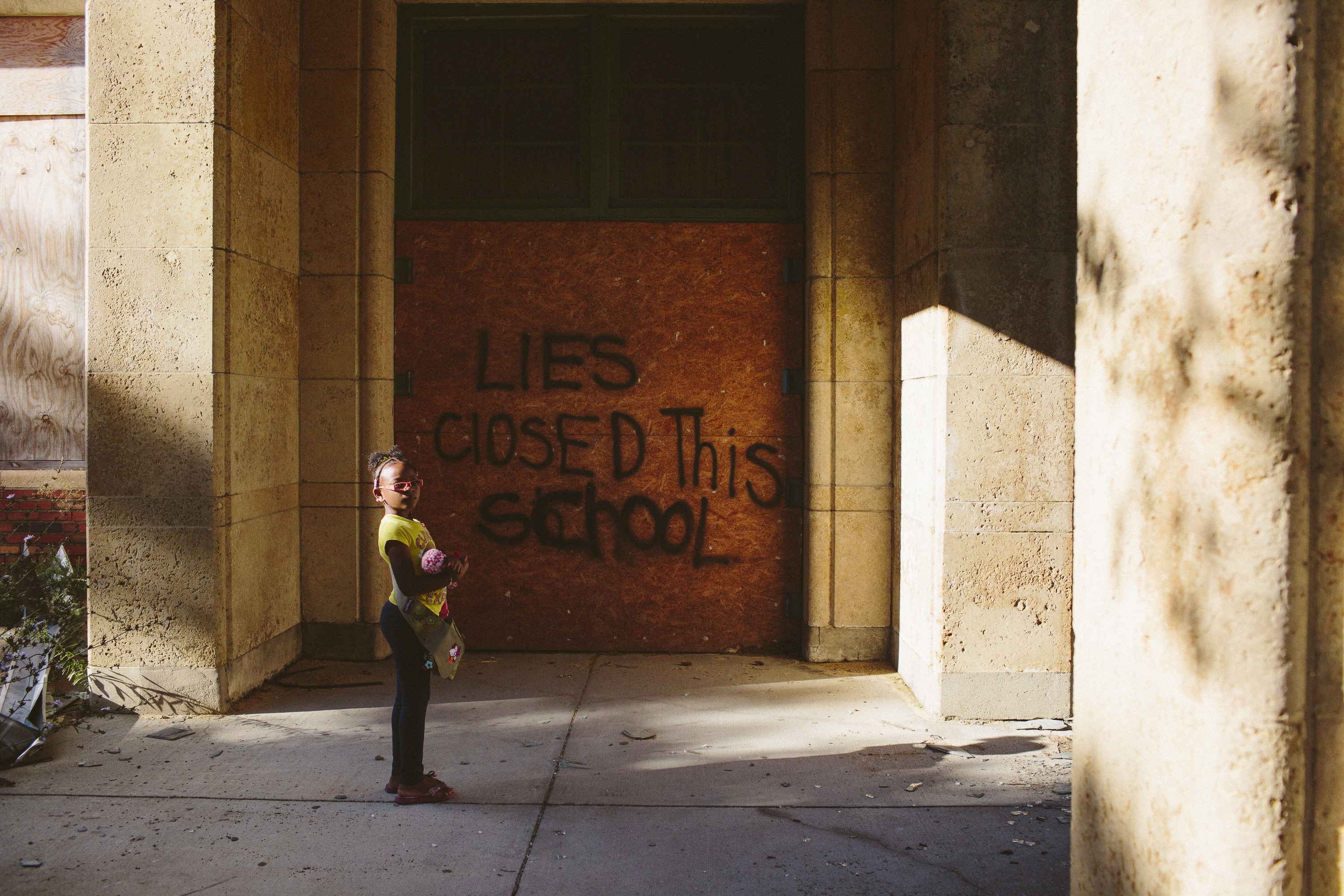 Moore and the other parents decided the available alternatives weren’t good enough for their kids. In May, they organized a protest-walk from Oakman to Noble to show just how long the trek for general education students would be. They were rewarded with a promise of busing for all students, but Oakman would still close.In August, they organized a trip to the State Board of Education to ask for help. There, they were told Oakman’s closing was a “local” issue and out of the state board’s control.In November, after the new school year started, they went to a Detroit City Council meeting. Since the school had been sitting abandoned for the past few months — prey to scrappers — repair costs were said to be nearly $8 million now. (The city is currently selling the building for $230,000.) Oakman was officially done.Chrishawana headed to Paul Robeson-Malcolm X Academy, a DPS school one of her Oakman teachers recommended. Tylyia, a bespectacled and precocious nearly 4-year-old, started pre-K at a DPS program housed inside a former traditional public school that had been renamed and turned into a charter school the year before. (This arrangement is a confusing but increasingly normal part of schooling in Detroit and can make it difficult to determine just how many schools are opening, closing, being turned into charters or simply renamed.)
Moore and the other parents decided the available alternatives weren’t good enough for their kids. In May, they organized a protest-walk from Oakman to Noble to show just how long the trek for general education students would be. They were rewarded with a promise of busing for all students, but Oakman would still close.In August, they organized a trip to the State Board of Education to ask for help. There, they were told Oakman’s closing was a “local” issue and out of the state board’s control.In November, after the new school year started, they went to a Detroit City Council meeting. Since the school had been sitting abandoned for the past few months — prey to scrappers — repair costs were said to be nearly $8 million now. (The city is currently selling the building for $230,000.) Oakman was officially done.Chrishawana headed to Paul Robeson-Malcolm X Academy, a DPS school one of her Oakman teachers recommended. Tylyia, a bespectacled and precocious nearly 4-year-old, started pre-K at a DPS program housed inside a former traditional public school that had been renamed and turned into a charter school the year before. (This arrangement is a confusing but increasingly normal part of schooling in Detroit and can make it difficult to determine just how many schools are opening, closing, being turned into charters or simply renamed.)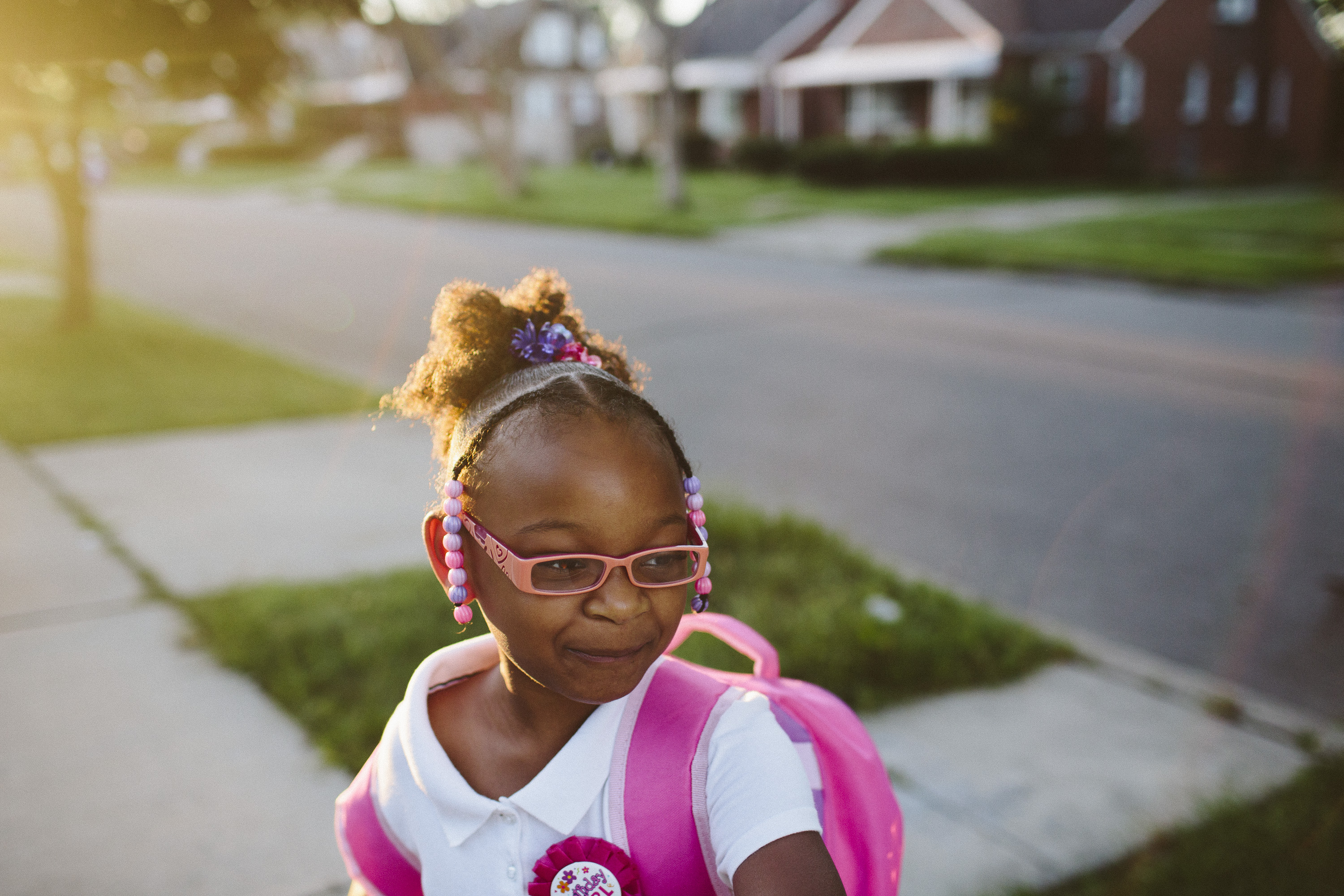 Moore had followed another Oakman teacher to the school, but she wasn’t sure about keeping Tylyia there for kindergarten. When picking up her daughter one day, Moore noticed that a bunch of kindergartners were waiting in a single-file line, with their arms crossed, to go to the bathroom. Each child was allotted one square of tissue paper. Moore watched the entire procession bug-eyed. When she went to the front office to ask the principal why this was happening, she was told kids would sometimes play around in the bathroom and waste the tissue paper. They needed to think about the budget. A year later, it was revealed that the school owed more than $60,000 to the city of Detroit for unpaid light bills.She moved Tylyia to Paul Robeson-Malcolm X for the following year.
Moore had followed another Oakman teacher to the school, but she wasn’t sure about keeping Tylyia there for kindergarten. When picking up her daughter one day, Moore noticed that a bunch of kindergartners were waiting in a single-file line, with their arms crossed, to go to the bathroom. Each child was allotted one square of tissue paper. Moore watched the entire procession bug-eyed. When she went to the front office to ask the principal why this was happening, she was told kids would sometimes play around in the bathroom and waste the tissue paper. They needed to think about the budget. A year later, it was revealed that the school owed more than $60,000 to the city of Detroit for unpaid light bills.She moved Tylyia to Paul Robeson-Malcolm X for the following year. Today, there are are 97 traditional public schools in Detroit, 98 charter schools and 14 schools in the Education Achievement Authority, a controversial state-run district created in 2012. All of them compete for dollars — and kids — with an estimated 30,000 more seats than students in the city. Three more emergency managers have cycled through, including Darnell Earley, a career manager who came off a stint running the city of Flint, where he made the executive decision to connect the city’s water source to the corrosive Flint River in order save money.By July 2015 the district’s general fund deficit was close to $216 million and the net deficit was a yelp-inducing $1.6 billion. As bankruptcy looked more and more likely, Gov. Rick Snyder announced that fall that he would soon reveal a plan to “rescue” DPS — a district that had been under state control for the past seven years. Ultimately, the plan came with $617 million to address the debt, as well as a number of unorthodox “reforms” that legislators argued would stop Detroit from ending up in the same pitiful position. Starting this year, the district could hire uncertified teachers, penalize striking employees and outsource academic roles, like the superintendent position, to surrounding districts. But the rescue package failed to address the structural issues that had driven the district into debt.Starting in June, the state can close all schools that fall in the bottom 5 percent of academic performance for three years in a row. GLEP calls this a win for accountability, but it still allows subpar schools and operators, just not the very worst, to thrive. Dozens of Detroit public schools, starved of funds through competition and austerity, fall into this category. Four months after the debt was addressed, it felt like the state, intentionally or not, was setting up the district for its final act.Among some parents, education experts, and especially the teachers, who have found themselves in a near-constant battle with the state, there’s a feeling that rather than encourage real competition or invest in the existing system, Michigan has stacked the deck against its own schools in a bid to unburden itself of the public education project entirely. Even as charters proliferate, areas of the city are now education deserts. In Brightmoor, a neighborhood a few miles north of Moore’s, there are 7,000 school-age kids and just five K-8 schools and one high school, a charter that this year was fined $144,000 for flouting a state law requiring administrators to be certified.
Today, there are are 97 traditional public schools in Detroit, 98 charter schools and 14 schools in the Education Achievement Authority, a controversial state-run district created in 2012. All of them compete for dollars — and kids — with an estimated 30,000 more seats than students in the city. Three more emergency managers have cycled through, including Darnell Earley, a career manager who came off a stint running the city of Flint, where he made the executive decision to connect the city’s water source to the corrosive Flint River in order save money.By July 2015 the district’s general fund deficit was close to $216 million and the net deficit was a yelp-inducing $1.6 billion. As bankruptcy looked more and more likely, Gov. Rick Snyder announced that fall that he would soon reveal a plan to “rescue” DPS — a district that had been under state control for the past seven years. Ultimately, the plan came with $617 million to address the debt, as well as a number of unorthodox “reforms” that legislators argued would stop Detroit from ending up in the same pitiful position. Starting this year, the district could hire uncertified teachers, penalize striking employees and outsource academic roles, like the superintendent position, to surrounding districts. But the rescue package failed to address the structural issues that had driven the district into debt.Starting in June, the state can close all schools that fall in the bottom 5 percent of academic performance for three years in a row. GLEP calls this a win for accountability, but it still allows subpar schools and operators, just not the very worst, to thrive. Dozens of Detroit public schools, starved of funds through competition and austerity, fall into this category. Four months after the debt was addressed, it felt like the state, intentionally or not, was setting up the district for its final act.Among some parents, education experts, and especially the teachers, who have found themselves in a near-constant battle with the state, there’s a feeling that rather than encourage real competition or invest in the existing system, Michigan has stacked the deck against its own schools in a bid to unburden itself of the public education project entirely. Even as charters proliferate, areas of the city are now education deserts. In Brightmoor, a neighborhood a few miles north of Moore’s, there are 7,000 school-age kids and just five K-8 schools and one high school, a charter that this year was fined $144,000 for flouting a state law requiring administrators to be certified.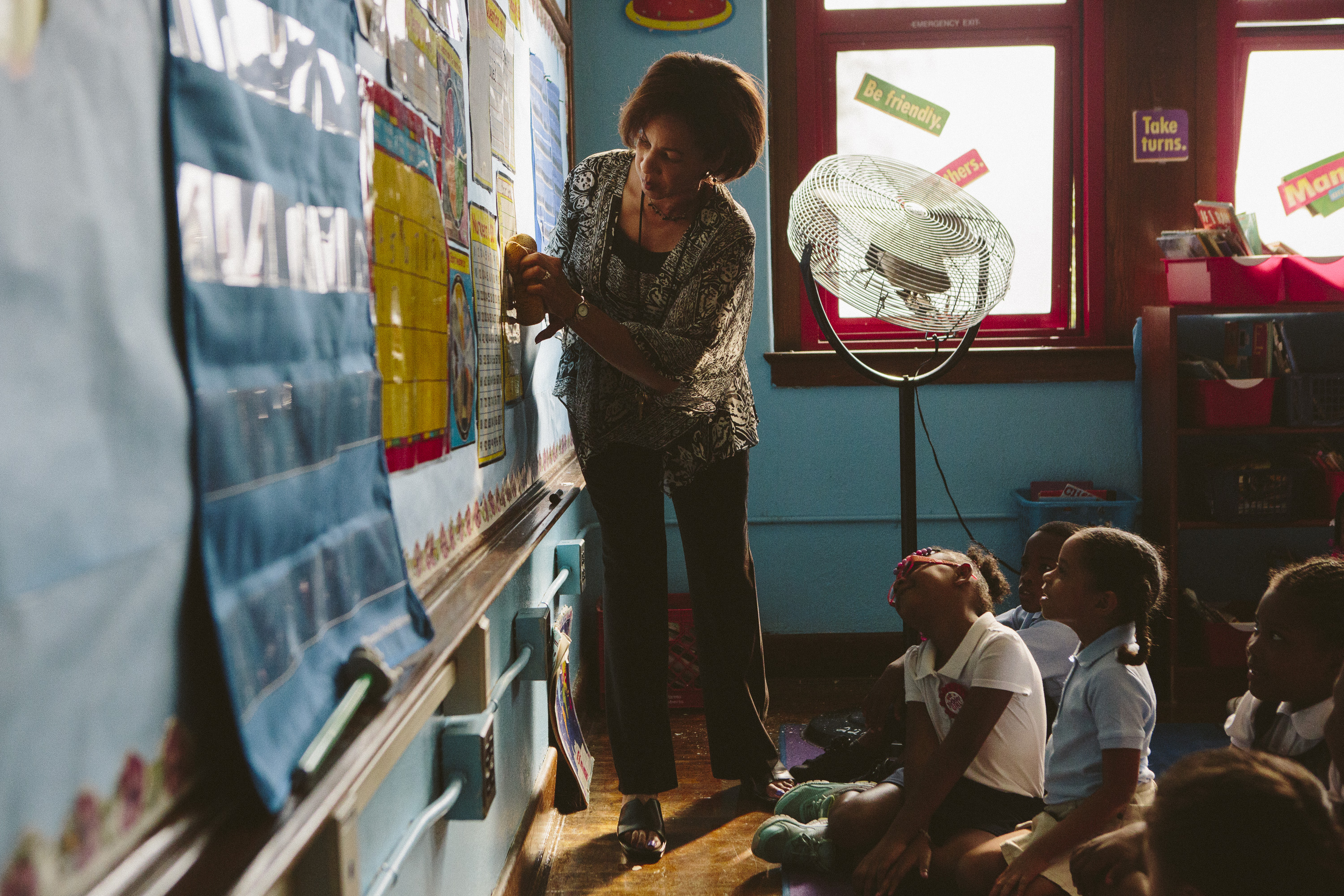 Students in metro Detroit’s wealthier, and whiter, suburbs — like those in communities across the country — depend on strong neighborhood schools; they are not asked to sift through a sea of failing options in the hope of finding the least-bad choice. Kids in Detroit, like Chrishawana and Tylyia, remain on the defensive, forced to prove their local schools, their voices, their futures, their heritage and place in the city, have value. With DeVos bringing her education policy to the national stage, what’s at stake is no longer just an education for Moore’s two girls, or the hundred thousand other kids in Detroit. We face a bigger question about what public schools should be.“You can’t overstate how devastating charter schools and DeVos’s political influence has been for Detroit and the state of Michigan,” Hammer said. “So if the nation is going to experience what Michigan has experienced, it’s frightening.”“The perverse thing about the charter movement, and they’ve been very self-conscious in their political tactics, is to exploit the desperation of parents in inner cities,” he continued. “Everyone knows we don’t have the silver bullet for how to provide effective public education. But rather than treating that as a collective obligation for us to figure out, there is the privatization of the public school system. Trying to run a traditional model, where schools are a public good and require a certain amount of public support and public resources, in parallel with a charter system is a death by a thousand cuts. It’s a way that will guarantee the destruction of the traditional public schools but not place anything effective as an alternative.”
Students in metro Detroit’s wealthier, and whiter, suburbs — like those in communities across the country — depend on strong neighborhood schools; they are not asked to sift through a sea of failing options in the hope of finding the least-bad choice. Kids in Detroit, like Chrishawana and Tylyia, remain on the defensive, forced to prove their local schools, their voices, their futures, their heritage and place in the city, have value. With DeVos bringing her education policy to the national stage, what’s at stake is no longer just an education for Moore’s two girls, or the hundred thousand other kids in Detroit. We face a bigger question about what public schools should be.“You can’t overstate how devastating charter schools and DeVos’s political influence has been for Detroit and the state of Michigan,” Hammer said. “So if the nation is going to experience what Michigan has experienced, it’s frightening.”“The perverse thing about the charter movement, and they’ve been very self-conscious in their political tactics, is to exploit the desperation of parents in inner cities,” he continued. “Everyone knows we don’t have the silver bullet for how to provide effective public education. But rather than treating that as a collective obligation for us to figure out, there is the privatization of the public school system. Trying to run a traditional model, where schools are a public good and require a certain amount of public support and public resources, in parallel with a charter system is a death by a thousand cuts. It’s a way that will guarantee the destruction of the traditional public schools but not place anything effective as an alternative.” The ongoing uncertainty of what will happen to DPS brought Moore to Gompers Elementary on a sticky Monday evening this August, the week before the school year began. Chrishawana was set to start ninth grade at Cass, following in her mom’s footsteps, and Tylyia would be in the second grade at Paul Robeson-Malcolm X. Two weeks earlier, Moore had received another robocall urging her to come to a “transparency Q&A” about changes families could expect with the new legislation from Lansing.Now she was trying to keep her cool as she maneuvered her teal Ford Windstar around the building. Cocking her head side to side, Moore made her way toward Gompers’ entrance. She wanted to closely investigate the situation before jumping to conclusions. A bright flyer taped to the front door gave her some momentary hope. But as she edged closer she realized it was just dismissal instructions. The school was empty and locked. There would be no meeting today.“I went home and thought about it again, but then it just started to make me angry,” Moore said. “I could have been home washing clothes, cooking dinner, with my kids, there are a thousand things I could have been doing, but I took out time to come to this because it was the beginning of the school year and I wanted to see what was going on.”
The ongoing uncertainty of what will happen to DPS brought Moore to Gompers Elementary on a sticky Monday evening this August, the week before the school year began. Chrishawana was set to start ninth grade at Cass, following in her mom’s footsteps, and Tylyia would be in the second grade at Paul Robeson-Malcolm X. Two weeks earlier, Moore had received another robocall urging her to come to a “transparency Q&A” about changes families could expect with the new legislation from Lansing.Now she was trying to keep her cool as she maneuvered her teal Ford Windstar around the building. Cocking her head side to side, Moore made her way toward Gompers’ entrance. She wanted to closely investigate the situation before jumping to conclusions. A bright flyer taped to the front door gave her some momentary hope. But as she edged closer she realized it was just dismissal instructions. The school was empty and locked. There would be no meeting today.“I went home and thought about it again, but then it just started to make me angry,” Moore said. “I could have been home washing clothes, cooking dinner, with my kids, there are a thousand things I could have been doing, but I took out time to come to this because it was the beginning of the school year and I wanted to see what was going on.”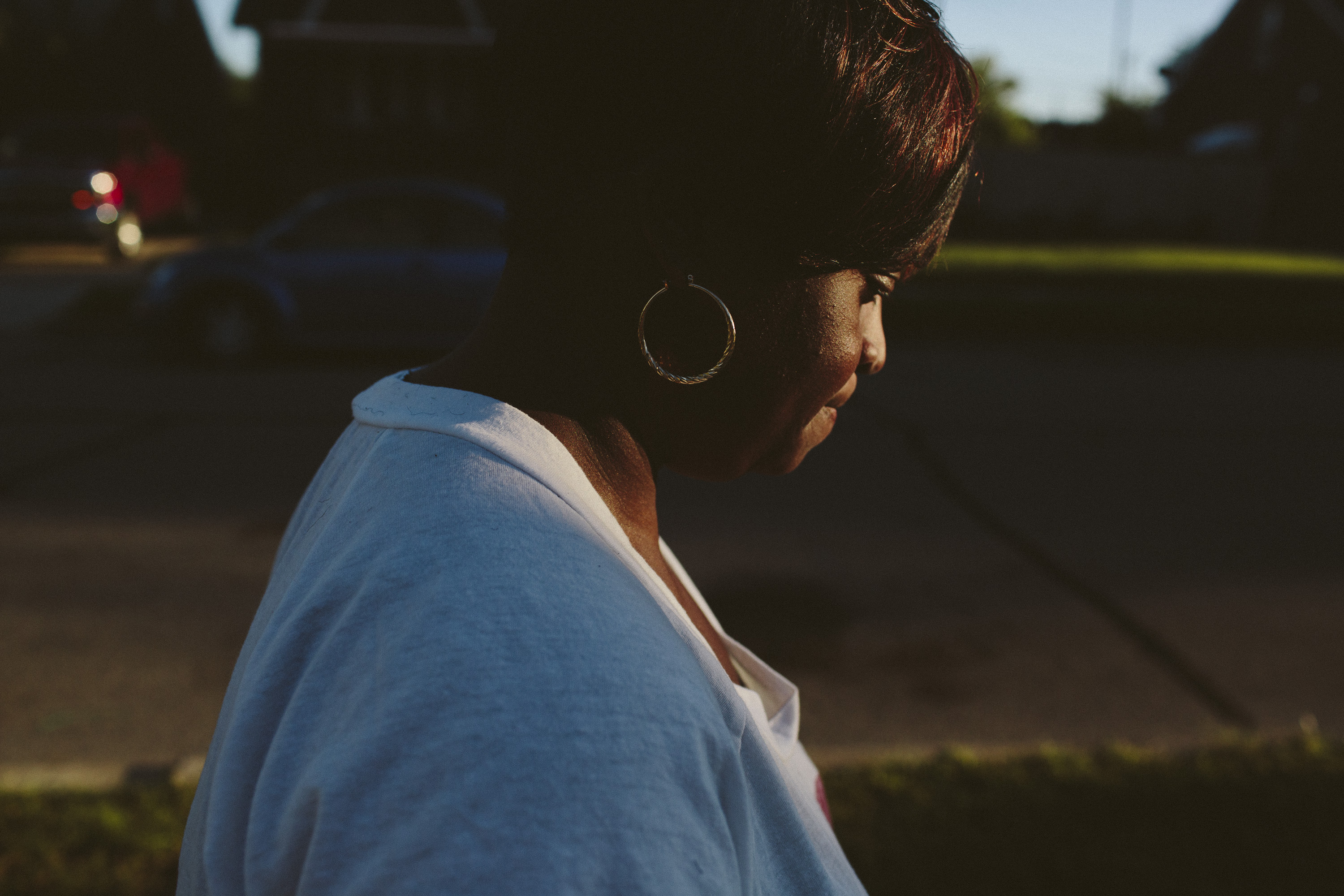 Moore’s frustration went beyond the meeting. Yes, she was mad school officials had failed to show up for a meeting they had planned, with no notice and no apology. But it was bigger than that. Their absence proved the point so many had already tried to make: that Detroit’s schools were defective and broken. Battered by competition, it felt like the district had stopped trying. Parents like her should opt out, no matter that escaping the district meant no guarantee of escaping mediocrity.“I can’t give up on the district, because that’s what they want us to do. They want us to get frustrated and leave,” Moore told me a few days later as she drove home from picking up Chrishawana’s class schedule. A parade of sagging structures, weedy lots, and flimsy posters beckoning families to enroll in such-and-such school flew by as the minivan bounced along the highway. “It’s already so accepted. Friends always say, ‘Girl! Why are your kids in DPS?’ It’s like, why aren’t yours? I live here, I pay my taxes here. So why can’t I educate my kids here?”
Moore’s frustration went beyond the meeting. Yes, she was mad school officials had failed to show up for a meeting they had planned, with no notice and no apology. But it was bigger than that. Their absence proved the point so many had already tried to make: that Detroit’s schools were defective and broken. Battered by competition, it felt like the district had stopped trying. Parents like her should opt out, no matter that escaping the district meant no guarantee of escaping mediocrity.“I can’t give up on the district, because that’s what they want us to do. They want us to get frustrated and leave,” Moore told me a few days later as she drove home from picking up Chrishawana’s class schedule. A parade of sagging structures, weedy lots, and flimsy posters beckoning families to enroll in such-and-such school flew by as the minivan bounced along the highway. “It’s already so accepted. Friends always say, ‘Girl! Why are your kids in DPS?’ It’s like, why aren’t yours? I live here, I pay my taxes here. So why can’t I educate my kids here?” CORRECTION (Dec. 24, 1:28 p.m.): An earlier version of this article gave an incorrect figure for the number of charter schools open in Detroit in the 2006-07 school year. Five schools opened that year, not six, and 82 had opened over the preceding decade, not 81.The first chart in this story has also been updated to include data on the population of school-age children in Detroit.Allie Gross is a journalist based in Detroit whose work has appeared in Jacobin, VICE, Slate, the Atlantic, Mother Jones, and FiveThirtyEight. Prior to pursuing a career as a journalist, she taught fifth grade language arts and social studies at a charter school in Detroit. Follow her on Twitter @allie_elisabeth.
CORRECTION (Dec. 24, 1:28 p.m.): An earlier version of this article gave an incorrect figure for the number of charter schools open in Detroit in the 2006-07 school year. Five schools opened that year, not six, and 82 had opened over the preceding decade, not 81.The first chart in this story has also been updated to include data on the population of school-age children in Detroit.Allie Gross is a journalist based in Detroit whose work has appeared in Jacobin, VICE, Slate, the Atlantic, Mother Jones, and FiveThirtyEight. Prior to pursuing a career as a journalist, she taught fifth grade language arts and social studies at a charter school in Detroit. Follow her on Twitter @allie_elisabeth.
Advertisement

Advertisement

Advertisement

Advertisement

Advertisement
John Engler, the state’s Republican governor, was in the middle of an education funding overhaul that would rely on sales taxes rather than property taxes and tie dollars to students rather than districts. This, he and backers including the Michigan Chamber of Commerce reasoned, would keep community taxes down but raise school quality overall as schools competed for the most kids and the most funding. “The schools that deliver will succeed. The schools that don’t will not,” Engler said in an October 1993 speech promoting the funding plan. No longer will there be a monopoly on mediocrity in this state.”Charter schools fit right into this paradigm, one way to save students from a stagnant and bureaucratic public school system. Reformers said opening districts up to competition would force schools to improve or be put out of business. Parents would get better options in a new education marketplace, free to choose among traditional public schools, state-funded charter schools, and eventually private and parochial schools paid for by state-funded vouchers.“The goal of charter public schools was to provide choice and options for students and parents trapped in failing traditional public schools who didn’t have the means to move to the suburbs or pay private school tuition,” said Gary Naeyaert, executive director of the Great Lakes Education Project, a pro-charter advocacy group that DeVos founded and funds and where she sits on the board. “We’ve always had school choice for rich people, and charter schools provided choice for everyone else.”Charters’ biggest champions in Michigan were members of the business community and a cadre of billionaires with ties to the religious right.
Advertisement
Advertisement


Advertisement

Advertisement


Advertisement

Advertisement


Advertisement
Through the Great Lakes Education Project, the DeVos family has played a major role in ensuring the education marketplace remains unregulated. In 2011, they successfully advocated to lift the charter school cap and killed a provision that would have stopped failing schools from replicating. A review last year found “an unreasonably high” 23 charter schools on the state’s list of lowest-performing schools and questioned why after two decades of the charter experiment “student outcomes are still just ‘comparable’ to traditional public schools.”Nearly 80 percent of Michigan’s charter schools are run by for-profit companies — the highest rate in the nation.
Advertisement
Advertisement


Advertisement

Advertisement




